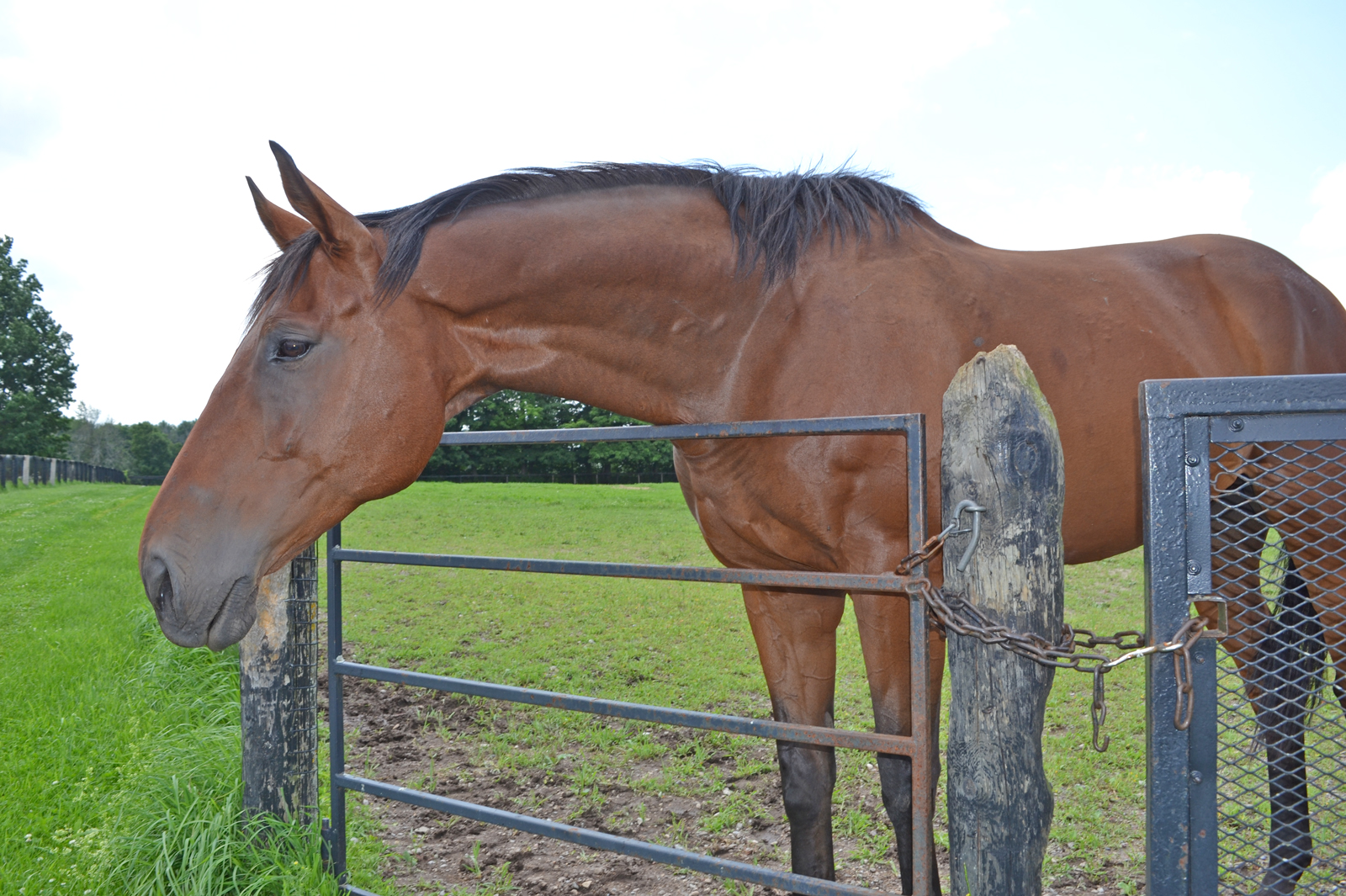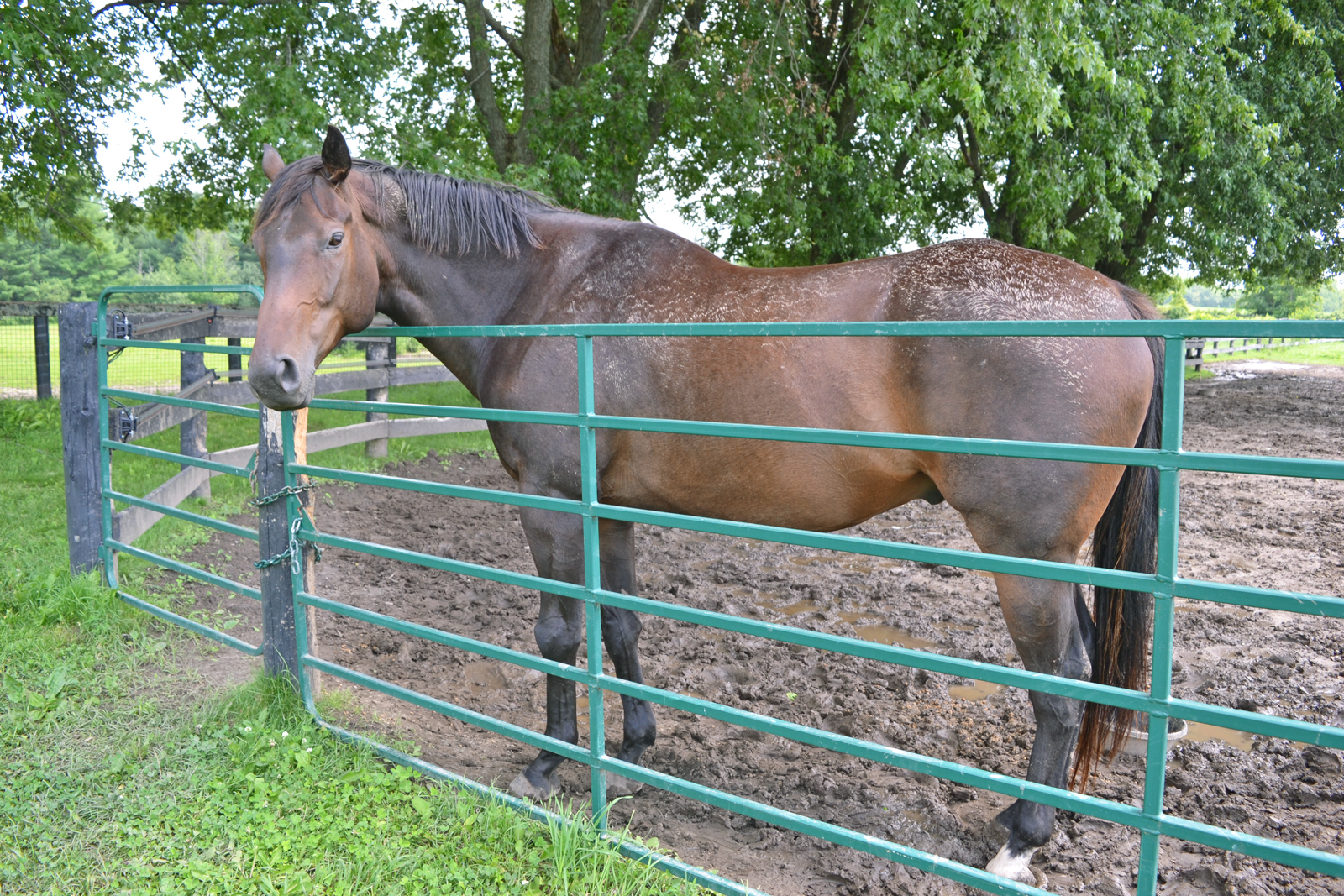WELLINGTON COUNTY – Understanding how horses are feeling can go a long way to improve equine welfare, increase safety for horses and the people around them, and foster stronger relationships between horses and people.
Equine Guelph instructor Zoë Thorbergson, who teaches a course about equine behaviour, told the Advertiser the key to understanding how a horse is feeling is to look at its eyes, ears, tail and body overall.
A horse in a positive mood will appear relaxed, with “ears in a neutral position or forward, nice soft eyes” and muscles and body language that doesn’t seem tense, she said.
They will likely hold their head in a neutral position – not too high or low, and their tail will look relaxed and gently swish back and forth as they walk.
A horse that looks this way is likely feeling calm and enjoying their surroundings, Thorbergson said.

See the signs – Reading a horse’s body language by looking at the position of its ears, head and tail, as well as observing its muzzle and eyes, can tell you a lot about how the horse is feeling. Both thoroughbreds above are retired race horses currently living at the LongRun Thoroughbred Retirement Society farm in Erin. Photos by Lorie Black
Stress
But if their ears are pinned backwards, eyes wide open, nostrils flared, or tail swishing significantly, the horse is showing signs of a more negative mood, she said.
A horse showing these signs is likely concerned about something they can see, hear or feel.
Horses’ heads and tails are good barometers for stress, Thorbergson said – the higher a horse is holding their head or tail, the higher the horse’s level of concern.
“Ears are a really good indicator of how the horse is,” Thorbergson said.
A horse may flick their ears backwards and forwards or angle their ears backwards to listen to something behind them – this is not a sign of stress.
But “if ears are pinned hard against the head, that indicates they are not happy with the situation” – likely because either a person or another horse is “too close in their space and they are not happy.
“If you are unfamiliar, then step away from a horse that has their ears pinned,” she said, because the horse is “telling you in no uncertain terms, ‘this is not acceptable.’”
And if you don’t heed the horse’s warning, they “will likely try to bite or strike with front hoof.”
A stressed horse may also prick their ears far forward while holding their head high and eyes wide open, “because they are trying to get a really good view of what they are looking at,” Thorbergson said, which indicates they are “highly concerned” about what they see.
A stressed horse may also snort, “really, really loudly,” she added.
More subtle signs of stress include tension in muscles and wrinkles around the horse’s eyes, muzzle and nose,” Thorbergson said.
This can be a sign the horse is uncomfortable or unsure about what is happening.
Arousal
Horses’ body language also offers clues about their state of arousal, or how alert, awake and attentive they are feeling.
A horse in a very low state of arousal may be standing with one hind leg cocked, resting on the tip of their hoof, or may be laying down on the ground, Thorbergson said.
During a low arousal state the horse may drift off to sleep – whether they are standing or laying down.
A horse with a high state of arousal may hold their head and tail high and open their eyes wide, Thorbergson said.
High arousal can be a positive or negative feeling – a horse galloping around a field in a high state of arousal may be trying to run away from something that frightened them, she said, or they may be playfully galloping around with another horse.
Play
Horseplay can get pretty rough at times, Thorbergson noted, so “it can be quite concerning to see them play.
“They will rear up and strike each other with hooves and will bite each other very hard,” she said.
Thorbergson compared horses’ play to “teenagers having a fun game of football and tackling each other.”
It can be difficult at times to tell the difference between playful fighting and real aggression, she noted.
“That comes with observing horses for a period of time to see whether they are friendly towards each other in other situations.”
If they eat together peacefully and rest together peacefully, that’s a good sign that when things look rough, the horses are playing, not fighting, she said.
If one horse lies down while the other keeps watch, or “they can eat together without chasing each other or biting each other, then they are most likely what we would call friends,” Thorbergson said.
An interaction is likely not friendly, however, if the horses keep their ears pinned right back and one horse is constantly chasing the other, rather than taking turns chasing one another, she noted.
“If only one is chasing with ears flat and mouth open, while the other horse just keeps running, that’s most likely fairly aggressive behaviour.”
Pain
Horse’s body language can also indicate pain.
“Horses are very stoic,” Thorbergson said. “Because they are a prey animal, they don’t want to advertise they are in pain to their predators. So they try to hide it at all costs.”
That makes it important for horse owners to be aware of changes from their horse that might indicate pain.
“Any change in behaviour is the biggest key,” Thorbergson said, which “can be very subtle or it can be an instant change.”
Sometimes pain can present as wrinkles around the horse’s eyes, nostrils and ears, Thorbergson said.
A horse experiencing pain may not want to move much and may avoid looking directly at people, and pinned ears or a pinned tail can be a sign of pain.
“Bucking at the back end could be an indicator of pain as well,” Thorbergson added.
Heat
A horse’s body language can indicate that they are struggling with hot weather.
“Horses are really susceptible to heat stress,” Thorbergson said.
An overheating horse is likely to breath heavily and rapidly, and will hopefully be sweating profusely, she said, though “some can stop sweating, which can be highly dangerous.”
A horse that’s too hot might “look quite miserable,” holding its head low and ears off to the side, she said.
“Eyes will look really dull, eyelids may be half closed [and] nostrils really flared.”
If pain or heat stress is expected, Thorbergson recommends having the horse seen by a veterinarian as soon as possible.



